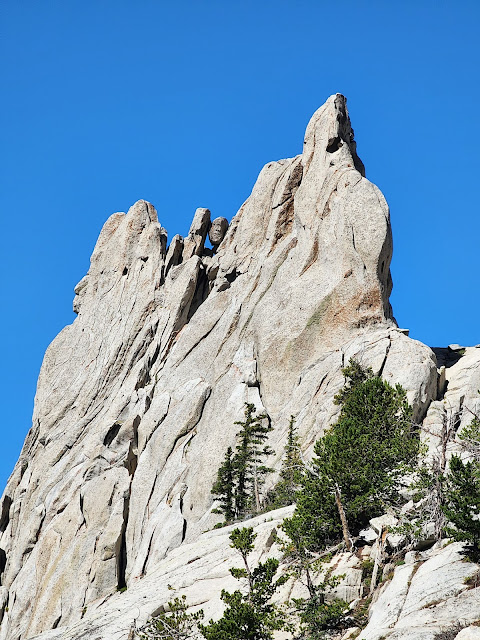I grew up in Orem, Utah. If you've never been there, the mountains cup my city against Utah Lake like a bucket seat in a fancy car. I used to feel exposed and uncomfortable in flat places without mountains on all horizons.
The mountains and lake of my home.
I have explored many of the mountains around Utah County but not the peaks on the north side of the bowl. That is, not until this month. My friend and colleague Matt Heiner invited a bunch of people to meet at the
Peak View trailhead at 4:45am on August 14th. Five us total showed up: Matt, Garritt, Richard, Steve, and me.
We saw a solifuge on the main trail. Such cool creatures.
The city was still in night mode as we approached the ridge.
Can you see both Utah Lake and Great Salt Lake?
Limber pine leaning toward Utah Lake.
Peak in sight, the four travelers consulted the map.
The trail becomes pretty diffuse as it climbs into the cirque.
And even more so once within.
There was just a tiny bit of snow left, and the extreme patterns of plants on the edge.
Close-up of these pioneers.
Can you see why they call these the Question-Mark Cliffs?
The steepest section of the trail is climbing up this chute to the second ridge.
I'd never seen Utah Lake from this angle.
The mountains to the north aren't as beautiful as Utah Valley's, but they are still nice ;)
Antelope "Island" and the Salt Lake Valley.
It is pretty striking to see how close downtown is to so much exposed lakebed.
The mountains of my childhood from a new angle.
We don't have many glacial features in Utah, but Bells Canyon has some nice till and moraines.
Even this little lake; turquoise from glacial flower.
Just a man, his sandwich, and water bottle.
That final ridge isn't technical, but it's intimidating to have sheer drop offs.
I was surprised how nervous this made me.
Almost to the top.
Can you make out the tallest free-standing structure west of the Mississippi?
Proof.
The lake.
Both lakes (and the mine, of course).
You know that feeling when you realize you're going to have to climb back down?
At least we didn't have to climb that ridge.
It was sunny but not blazing on the way down.
We could tell we were almost back by the strange collection of houses on Traverse Ridge.
It was really humbling to experience such expansive and well-preserved wilderness so close to where we live. I'm so grateful to those who had the foresight to create the Lone Peak Wilderness Area. As our valley grows, I believe that keeping land and water public will enhance our quality of life and ensure our descendants can feel the awe and communion we are privileged to enjoy.



















































